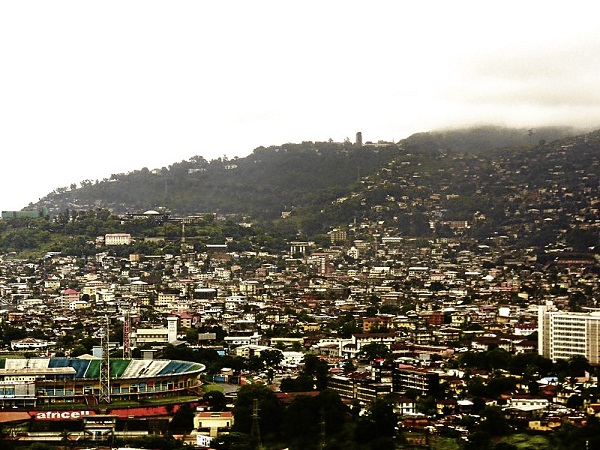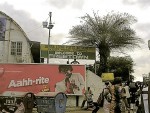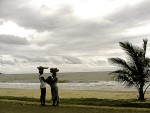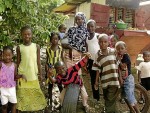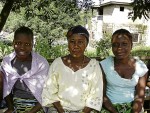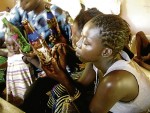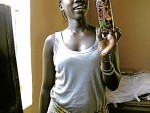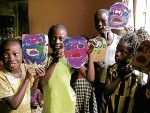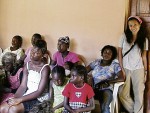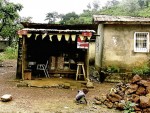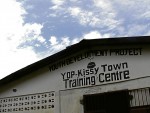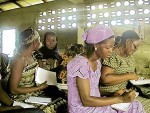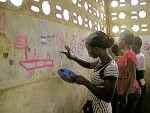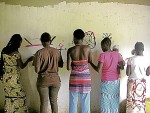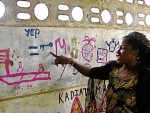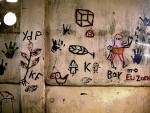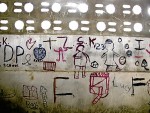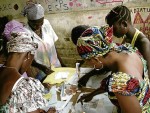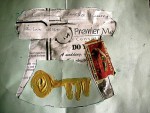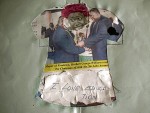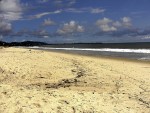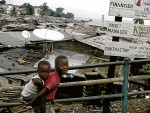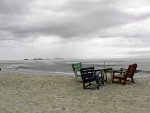 SHARING art and advocacies: my first 48 hours
SHARING art and advocacies: my first 48 hours
I kept mum about my Sierra Leone trip. It wasn’t easy explaining to the people you love why you have to travel to a once war-torn country to help when your own country is also in need. But it was a simple rationale for me—humanity over nationality. My intention was to reach out through art to the women and youth victims of armed conflict and human rights violations. If I do so in my country, why not in Sierra Leone?
I FLEW on Aug. 6, 2011. It was a grueling 28-hour flight from Manila to Hong Kong, Paris, and Conakry Lungi, Sierra Leone. After haggling with customs officials, a car ride, and a ferry ride, I found myself in Freetown, Sierra Leone!
FREETOWN is the capital and largest city of Sierra Leone. Its main beach, Lumley, is admirable; it has beautiful sunset with crashing waves.
MOST of the days were gloomy, since it was the rainy season. This is Kamayama, one of the poorest communities in Freetown. No water, no electricity, and no clinic or hospitals. A daily trek for most women and children.
My next 72 hours, morning, noon and night
I meet the beautiful women of Kamayama. A mix of old and young, wives, teachers, daughters of chiefs, fisher folk, students, vendors, tie-dye-makers, widowed. They were all victims of the 1991 Civil War.
THE art activities focused on giving value to themselves as women and as individuals who can contribute to their communities and society. We used materials that were easily found in the area. They were discarded items such as bottles, cardboard boxes, jars, etc.
I TRIED to bind their daily routine with some objects such as the bottles. The women infusing their wishes and dreams for their community by painting on symbols of hope on the glass and placing a piece of paper with their wishes in the bottles.
IT WAS nice to hear from the women how happy they were, that they were able to discuss their thoughts on security, health, living, food and education for their children and the community, in a creative way.
IN ANOTHER activity, the women made masks, incorporating found objects, personal items, symbols to reveal who they are and what they want to become. Most women shared their pain and loss. Some were once raped and some had children who were taken away and became child soldiers.
THE CHILDREN also did the art workshop. The mothers felt it was a recovery process, where the children and even the women themselves had a different form of social support through creative means.
THEIR thoughts were focused on survival. Even after losing their homes and husbands, and witnessing their loved ones get their hands and legs amputated, they try in their own capacity to adapt despite the lack of resources, being displaced, and still struggling after the 11-year civil war. It was a good reminder of what really matters in life.
THE next 120 hours were spent traveling. From Kamayama, I went to visit other communities of Kissy Town, Waterloo, Lumley, and Freetown.
Rough terrain, muddy red soil, steep roads and embankments were not unusual.
I SEE a child playing with stones. Kissy is another place where most people earn by selling stones and coal.
AFTER two hours driving from Freetown, I arrive at the Youth Development Project Training Center.
I ALWAYS try to get to know everyone. We start by writing down our names, age, country, or tribe. They were from different tribes, mostly Muslims and a few Christians.
HERE in Kissy Town, the women I met were mostly displaced. They suffered the brutalities of war and are still rebuilding their lives. We decide to make a mural and painted directly on the walls of the training center.
THE mural encouraged the women to understand their surroundings, to help them explore and discuss through images what has happened to them after a traumatic event, and to make them express what they want for themselves and the future of their children.
THIS IS Theresa; she is 30 years old, married, with three children. Theresa only wants basic human needs—home, education and a means to earn, not just for her family or community, but for Sierra Leone. The key has become a symbol for education for these women. Living with so little, they know it is not charity that will help them.
IT’S satisfying to see murals. They can easily be shared with people who pass by the area, making them aware of the community and their concerns.
LOOKING at the walls of Kissy Town’s training center, I am again reminded of my strong belief in faith. It is amazing to find it in places where pain and revenge are usually easier to embrace.
IN SOME form of creativity, we learn from each other and somehow feel connected. It helps us understand that there are issues bigger than any of us.
WORKING with the women, we go through their paper doll dress activity. Expressing their needs visually puts things in perspective. We avoid assuming what we think is best for others, and instead we listen and hear their voices. In this activity with the paper doll dresses, we share our art works, dreams, favorite sports, our mothers and the men in our lives. We find comfort in sharing.
My next 96 hours, spent contemplating while exploring the beaches around the Freetown peninsula with the locals. Like every new place we encounter, we just see the surface—but there’s more to it. It isn’t just a place. My 336 hours, 14 days, are snapshot and memories now. I cannot and will not pretend to know the conflicts, politics, and struggles of this country. But I did learn a lot about re connecting with humanity. How I appreciate my home. How survival is all that some may have.
THE WOMEN continue to choose to fight and struggle, knowing that their only choice is to choose to survive. I can see that in this country the real diamonds in Sierra Leone are the people.
I WAS able to catch the stunning sunset of Lumley beach, its white sand on a bright day.
WHILE Sierra Leone may be heartbreakingly real, it is still also a symbol, signifying an even greater absence found everywhere.
AFTER visiting the war-torn paradise of Sierra Leone, with its enchanting landscapes, world-renowned blood diamonds, and downtrodden souls, I’ve seen firsthand a painfully concrete example of beauty belying conflict.
The author is an artist and the founder of StartArtproject, a nonprofit organization aimed at providing art workshops to women living in conflict zones in the Philippines (www.startart project.org). A painting major graduate from the University of the Philippines (UP) Fine Arts Department, Luna went on to take an art residency in Cooper Union New York. Her women and children advocacies are endeavors she is currently studying in-depth in her Masters in Women and Development Studies in UP. E-mail her atb [email protected], @nikkiluna twitter

